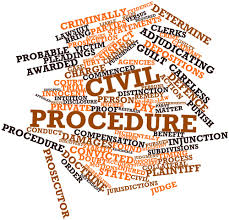Indian Legal System > Civil Laws > The Code of Civil Procedure > What is a Decree? A decree is one of the most frequently used terms in Civil Matters. The adjudication of a court of law is divided into two classes: decree and orders. In this article, we are going to discuss the decree. […]
Categories
What is a Decree?
- Post author By Hemant More
- Post date June 21, 2020
- No Comments on What is a Decree?

- Tags Absolute decree, Adjudication, Ahmed Musaji Saleji v. Hashim Ibrahim Saleji, AIR 1915 PC 116, AIR 1921 Bom 220, AIR 1927 Rang 148 (PC), AIR 1964 SC 1099 (1113), AIR 1969 SC 575 (577), AIR 1970 MP 110(118), AIR 1972 GUJ 1719, AIR 1976 Guj 152, AIR 1976 SC 1503 (1518), AIR 1977 ALL 554, AIR 1982 Guj. 254, AIR 1983 SC 676, AIR 1987 MP 120, AIR 1991 Cal 53, AIR 1994 SC 1901 (1903), AIR 2012 SC 903, Bal Kishan v. Tulasi Bai, Cause of Action, Code, Code of Civil Procedure Code, Conclusive determination, CPC, Dattatraya v. Radhabai, Decree, Decree Nisi, Deemed decree, Deep Chand v. Land Acquisition Officer, Diwan Bros. v. Central bank of India, Ex parte decree, Final decree, Formal expression, Gauhati Bank Ltd. v. Baliram. AIR 1950 Assam 169, Hansraj Gupta v. official Liquidators of the Dehra Dun-Mussoorie Electric Tramway Co. Ltd. AIR 1933 PC 63, Jagadishwar Sahai v. Surjan Singh Pal, Kanji Hirjibhai v. Jivraj Dharamshi, Leela Hotels Ltd. v. Housing & Urban Development Corporation Ltd., Ma Chon v. Maung Myint, Madan Naik v. Hansubala Devi, Motilal v. Padmaben, Name of parties, Narayan Chandra v. Pratirodh Sahini, Partially preliminary and Partially Final Decree, Preliminary decree, Ramnarayan v. Anandilal, Relief claimed by plaintiff, Shakuntala Devi Jain v. Kuntal Kumari, State of Rajasthan v. Savaksha, Subject matter, Suit, Vidyacharan Shukla v. Khubchand Baghel

